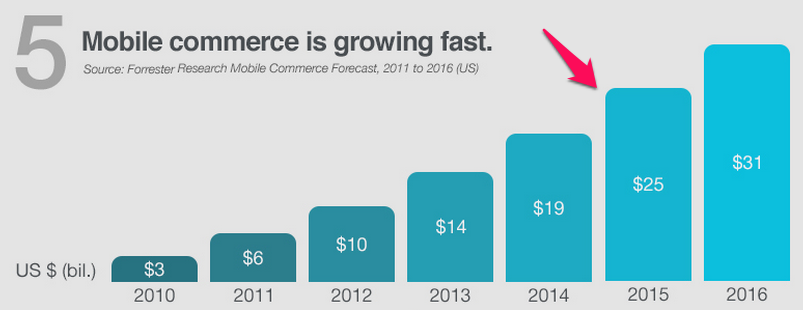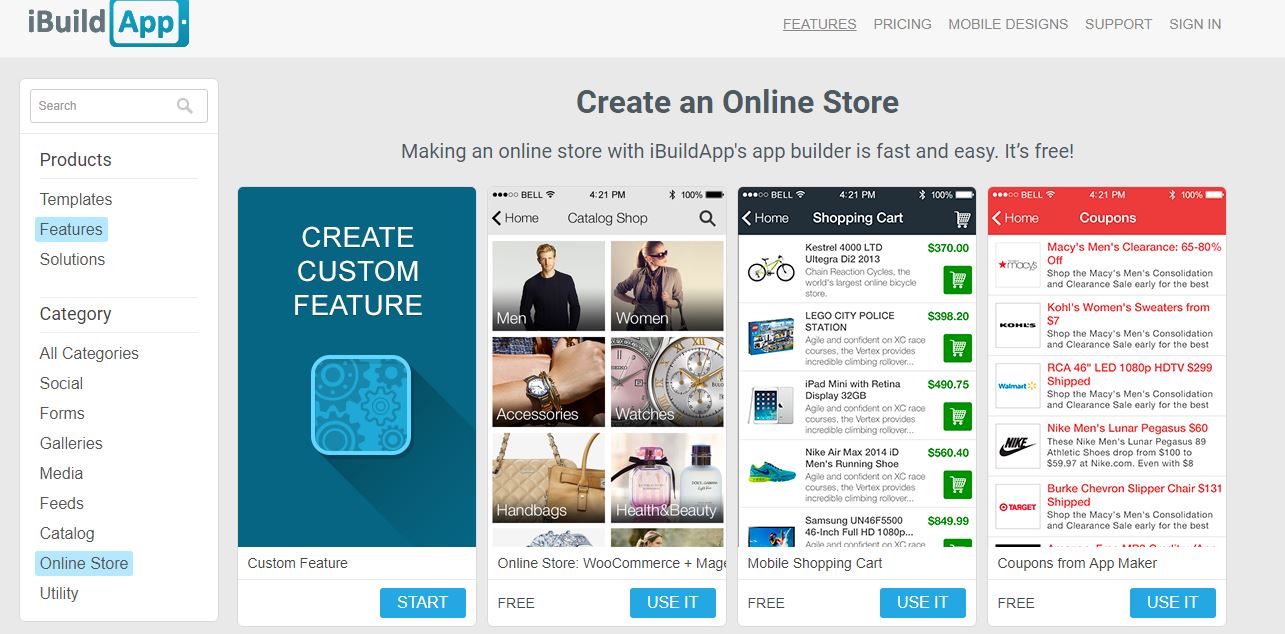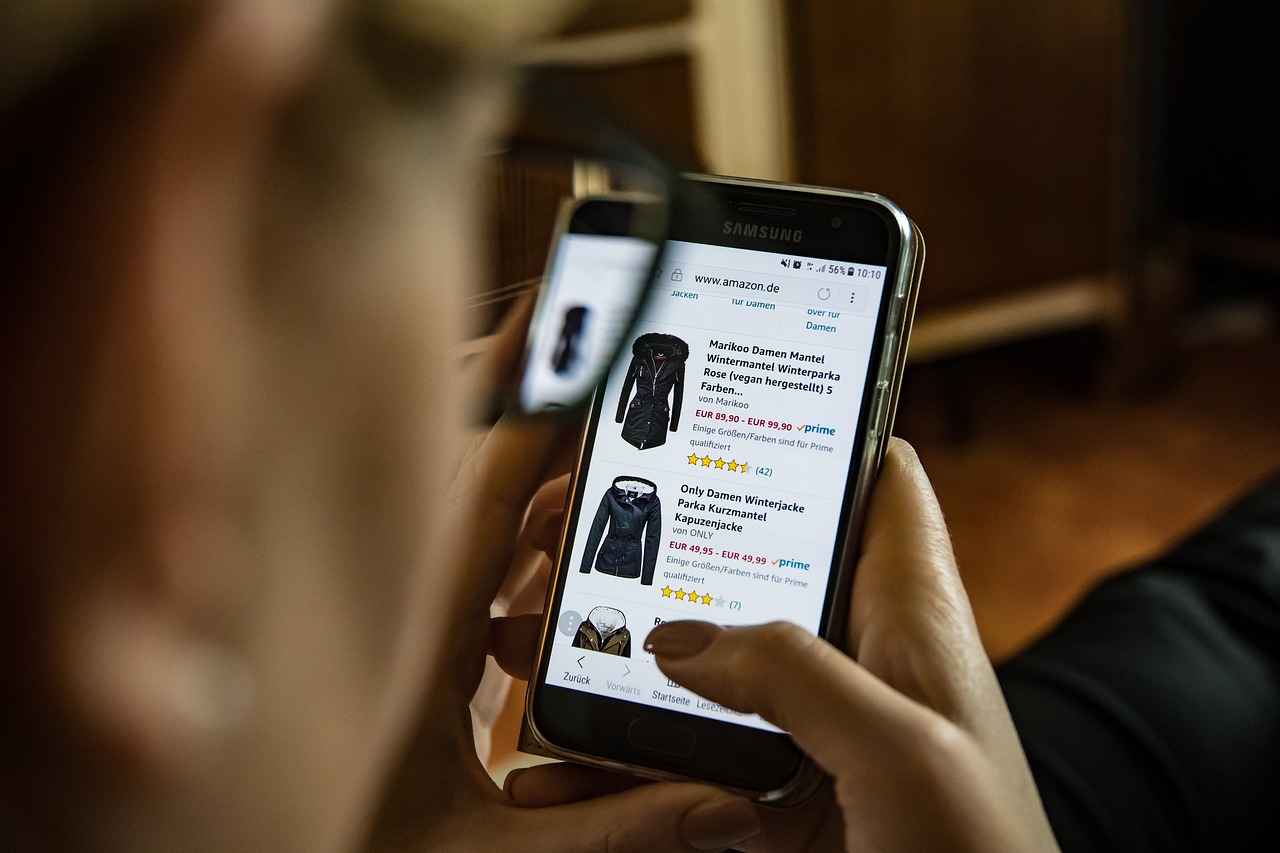According to Goldman Sachs, mobile commerce traffic will reach $600 billion by the end of 2018. A March 2016 Similarweb Report states that in several countries like in the UK, mobile-commerce traffic makes up almost 2/3 of the total online retail in January 2016. The same report alleges that mobile-commerce has the second highest percentage of eCommerce in the USA, while Germany is about to cross the half-half threshold.

M-commerce shows an annual 20- 35 % growth, which will end in a 150 billion USD global volume by the end of 2017. Amazon, the largest m-commerce retailer, drew 48 % more customers into its app in 2016 than in 2015. Source: Neil Patel, Forrester
What does all this mean for you?
It means that if you don’t have a foot in the door of mobile-commerce with a responsive, creative mobile app, your company will soon fall behind your competitors’. The best way to make sure this doesn’t happen is to invest in an Application Development Platform (ADP) that will take your mobile site to the next level.
What is an Application Development Platform?
An Application Development Platform (ADP or MDAP) is “a type of software that allows a business to rapidly build, test and perhaps deploy mobile apps for smartphones or tablets.”
With an application development platform, you can:
- Present your eCommerce site professionally in a mobile application environment.
- Customize the app to match your brand image and publish it to meet the front-end user’s requirements.
- Bind customer loyalty more easily by creating a meeting their expectations of you already having a fast mobile site
- Send instant alerts, notifications about new products, updates, discounts, and promotions that will get to your customer faster
- Identify where your consumers are by the second with geolocational data.
- Utilize even more channels to personalize content
While a few years ago only Amazon and other giant players could afford to build a standalone, eCommerce app themselves, nowadays the revolt of smaller eCommerce players is on full throttle. Everyone is now using ADPs to build custom apps for their eStores.
However, simply having a mobile app for your eStore is not a gold-paved way to customer engagement-nirvana.
The app also needs to be constantly tinkered and fine-tuned, but it’s well worth the time to do so. An optimized mobile app will give you greater accessibility to data & analytics and allow you to operate more smoothly and with more tractability that will spare vasts of work hours. Customers benefit from mobile commerce, too, not just with a faster buying process. Their social media presence also gets woven more deeply into their purchases with mobile shopping, making them feel that buying goods is just another comfy social media event.
What do you gain with an Application Development Platform?
A boosted user experience – creating an exclusive, convenient, fast and interactive shopping app
People are now used to the sleeker, more streamlined experience that smartphones and tablets provide. They know that the navigation has become more flexible and lubricated and that they can get the product they want with fewer clicks than what poorly designed “mobile-views” of websites often show them. Sharing customer reviews and shopping experiences is also way easier through an app than via desktop browsers. Customer experience has become smoother due to the rise of m-commerce, and desktop design is not likely to take back the lead.
Faster purchasing
Apps generally produce faster data load time. Customers can spend that extra time browsing among items faster.
More personalized content that creates higher customer loyalty
When you use an application development program to custom draw your data, your app can now more accurately record and utilize data on your consumers’ location, social media events, and product views compared to that same data collection done via websites with different browsers, different IP addresses, and different devices. You can also rank user preferences easier if the customer data is in one batch.
Furthermore, after recommendation engines like Yuspify are installed, user data can more easily be migrated between store and app and vice versa. Yuspify uses the customer information you’ve collected to launch offers that are shaped like recommendations, such as “Recommended for you” options.
Here are a few pages where Yuspify presents recommendation boxes in real time:
- The Product Page: The main aim of product page recommendations is to provide a possible “next step” to your visitors who might be coming from PPC campaigns, price aggregators and referrals For them, recommendations should be a central element of your product page.
- The Cart Page: Recommendations on cart pages reach the customer when they are in a very favorable psychological state and likely to make a purchase. Use this opportunity to upsell and increase your average order value.
- The Category Page: Showing recommendations on category pages can significantly reduce the time shoppers spend looking for their desired products and can help establish customer loyalty on your site.
- The Home Page: Your main page is the shopping window that most users see coming from various traffic sources. Show your latest deals and discounts, product portfolio and personalized recommendations for returning visitors.
A direct connection to your users
Adjusting notifications on a desktop webpage is usually complicated. And sending emails just cannot compete with notifications. It has become an obsolete channel for this purpose, and the winner is the omnipresent app. The latter’s ability to notify directly the user who is bound to their mobile device nearly 24 hours/day is clearly superior to the handful of hours you’d get with a user on with their desktop.
Sharper, more accurate analytics
If you possess your customer’s data in one package, you are going to gain a really pervasively sound knowledge of your customers – . their names, phone numbers, locations, shopping history, typical buying habits and more) As you enrich the wealth of customer data you possess, it will be easier to forecast future events as well.
Lower campaign costs.
By reaching your customers faster, you can also decrease your total campaign costs. Customers, themselves, become your micro-evangelists who help spread your news through social media integration.
Convenient in-store navigation and geolocation
All the built-in devices that mobile phones offer (accelerometers, gyroscopes, scanning codes, cameras, and location positioning systems) can be utilized for your commercial purposes. If you have a brick and mortar store as well, m-commerce apps can even show whether the products are in stock at the store closest to your customer.
What are the essential features of a retail app?
So now that you’re convinced that your store needs a mobile app, not just a mobile-friendly web page, how do you know what you need to have? There are a few essential features that your app must have, regardless of who designs it:
Notifications – that send immediate alerts about promotions, arrived products, discounts etc.
Personalization – based on customer preferences and history. This is essentially customer data collection in one big bundle.
Analytics – the ability to track and calculate conversion rates, the cart abandonment percentage, and the customer retention percentage
Social Media Integration – when social media registration and login is a one-step process, news about your product will find your customer more frequently
Options – the ability to include buy buttons, add to cart links, payment gateways, and popular security features
Major eCommerce platforms like Opencart, Cs-cart, Prestashop, Magento, Magento2, and WooCommerce have already developed their apps. If you don’t belong to any of these platforms and you don’t want to invest in building any native iOS or Android application, you can find basic features to add in eCommerce app template banks. If you are building an eCommerce site from scratch or you belong to a smaller platform that isn’t already supported by dozens of plugins and add-on developers, then a simple app builder bank could be just what you need. With their templates, you can build an app for your store even without advanced coding skills.

IBuildApp offers 500 app templates to download for less than 24 USD / month
Additional features to consider before starting building
- Fingerprint Login – It’s a more secure, streamlined (and one step!) option to let users choose to login with a fingerprint.
- Mobile Login – Along with social media logins, mobile login is another way to make the user entering process easier. Typing a long email address can be toilsome and annoying while a mobile number is usually 9-10 digits long.
- One Time Password (OTP) – This is a handy feature to have in case your customer’s password leaked out so that no other person can log in and access your user’s personal information.
- Social Login – The other advantage of logins via using Facebook, Google etc. is to make the registration faster and simpler.
- Working in Offline Mode – It’s comforting and handy to know that you can you can revisit an app in offline mode. You can even view several levels of pages, like product pages: first depth and category pages: at least down to the second depth or down to the product page.
Once your app is up and running, spread the word about it! Check out our article on How to Encourage Customers To Use Your Mobile App.
This is a guest blog written by Andras Marcell Marko. He is a Content Marketing Consultant for Yuspify, a recommendation engine provider, and a storyteller-content marketer for several charity organizations. He is also a social simulation expert, screenwriter of the hidden reality show “The Last Reality Show aka Invisible Business Angels” and an enthusiast of “personalized web-series” or deep series (a serial drama format where you can twist the story to comply only with your unique perception of the characters)








